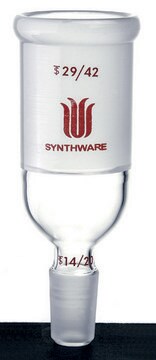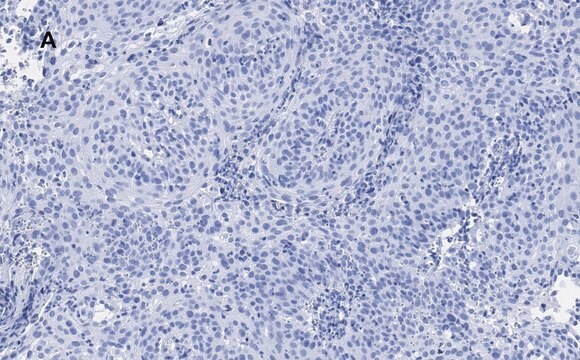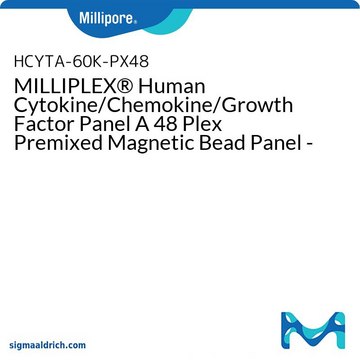04-775
Anti-Ha-Ras Antibody, clone MC57, rabbit monoclonal
culture supernatant, clone MC57, from rabbit
Sinónimos:
GTP- and GDP-binding peptide B, GTPase HRas, Ha-Ras1 proto-oncoprotein, Ras family small GTP binding protein H-Ras, Transforming protein p21, c-has/bas p21 protein, c-ras-Ki-2 activated oncogene, p19 H-RasIDX protein, transformation gene: oncogene HAMSV,
About This Item
Productos recomendados
biological source
rabbit
Quality Level
antibody form
culture supernatant
antibody product type
primary antibodies
clone
MC57, monoclonal
species reactivity
rat, mouse, human
technique(s)
western blot: suitable
isotype
IgG
NCBI accession no.
UniProt accession no.
shipped in
dry ice
target post-translational modification
unmodified
Gene Information
human ... HRAS(3265)
General description
Specificity
Immunogen
Application
Signaling
MAP Kinases
Quality
Target description
Linkage
Physical form
Storage and Stability
Handling Recommendations: Upon receipt, and prior to removing the cap, centrifuge the vial and gently mix the solution. Aliquot into microcentrifuge tubes and store at -20°C. Avoid repeated freeze/thaw cycles, which may damage IgG and affect product performance.
Analysis Note
Positive Antigen Control: Catalog #12-301, non-stimulated A431 cell lysate. Add 2.5µL of 2-mercaptoethanol/100µL of lysate and boil for 5 minutes to reduce the preparation. Load 20µg of reduced lysate per lane for mingels.
Other Notes
Disclaimer
¿No encuentra el producto adecuado?
Pruebe nuestro Herramienta de selección de productos.
Storage Class
12 - Non Combustible Liquids
wgk_germany
WGK 1
flash_point_f
Not applicable
flash_point_c
Not applicable
Certificados de análisis (COA)
Busque Certificados de análisis (COA) introduciendo el número de lote del producto. Los números de lote se encuentran en la etiqueta del producto después de las palabras «Lot» o «Batch»
¿Ya tiene este producto?
Encuentre la documentación para los productos que ha comprado recientemente en la Biblioteca de documentos.
Nuestro equipo de científicos tiene experiencia en todas las áreas de investigación: Ciencias de la vida, Ciencia de los materiales, Síntesis química, Cromatografía, Analítica y muchas otras.
Póngase en contacto con el Servicio técnico








